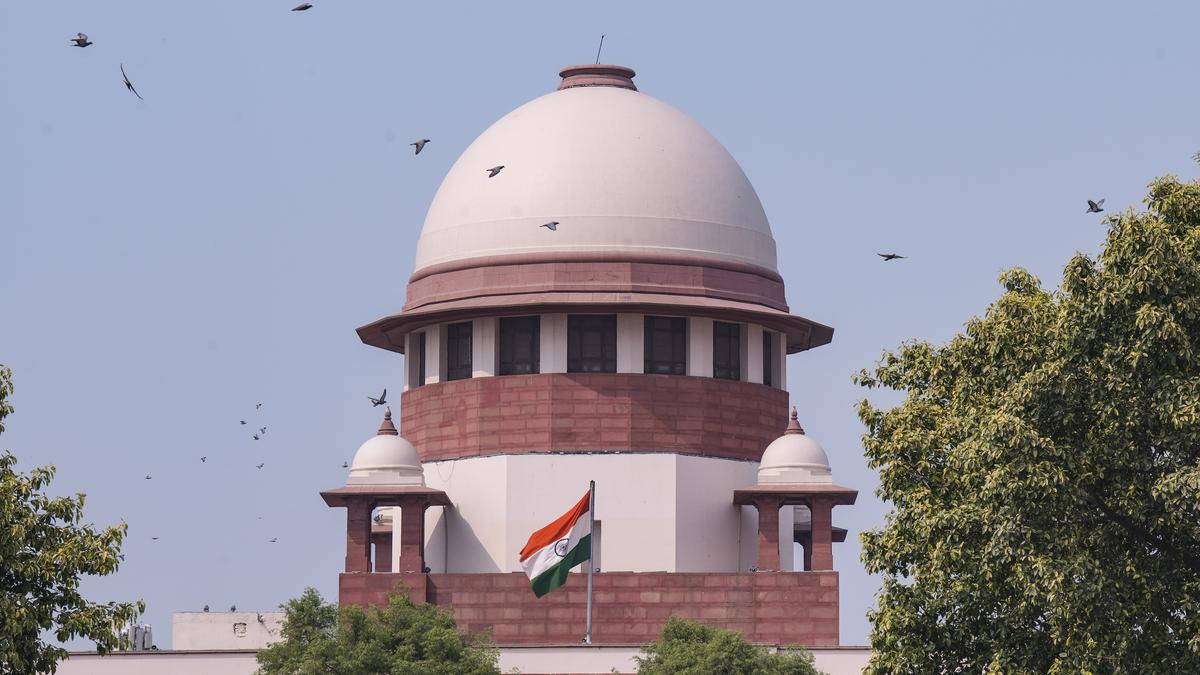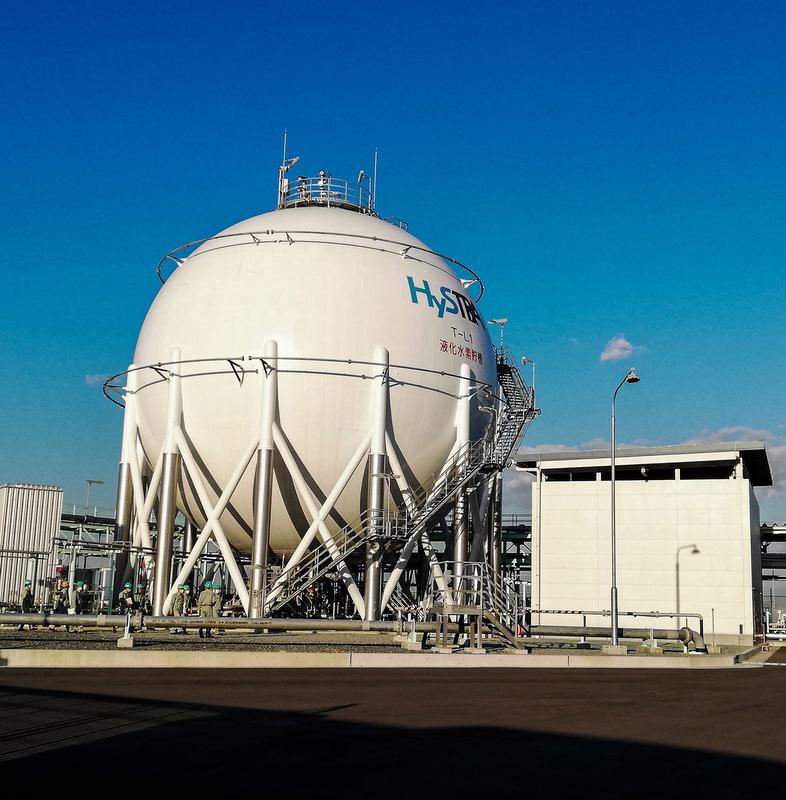Digital Access now a Fundamental Right

- 03 May 2025
In News:
Recently, the Supreme Court of India, in the case of Amar Jain v. Union of India &Ors., declared that inclusive digital access to e-governance and welfare systems is an integral part of the fundamental right to life and liberty under Article 21 of the Constitution. The Court issued a set of 20 binding directions to enhance the accessibility of digital services, especially the Know Your Customer (KYC) process, for persons with disabilities (PwDs) and other marginalized groups.
Background of the Case
The ruling arose from petitions filed which highlighted that digital KYC processes, which rely heavily on visual and facial inputs, were discriminatory and inaccessible to individuals with visual impairments or facial disfigurements. This impeded their access to banking, welfare schemes, and essential services.
Key Supreme Court Observations
- Digital access is part of Article 21: The right to life and liberty must now be interpreted to include meaningful digital access, particularly as governance, education, and financial services shift online.
- Constitutional mandate, not policy choice: Bridging the digital divide is not discretionary but a constitutional obligation under Articles 14, 15, 21, and 38.
- Substantive Equality: Digital services must be inclusive and equitable, particularly for:
- Persons with Disabilities (PwDs)
- Rural and remote communities
- Linguistic minorities
- Senior citizens
- Economically weaker sections
- Exclusion through technology: Digital platforms, in their current form, further alienate historically disadvantaged groups rather than empowering them.
Key Directives Issued by the Court
- Revise digital KYC norms to be PwD-inclusive.
- Reserve Bank of India (RBI) and other regulators must ensure universal accessibility.
- Mandate accessibility audits by certified professionals.
- Appoint nodal officers in each department to monitor compliance.
- Include PwDs in digital platform design processes.
- Ban discriminatory design features that rely solely on facial inputs.
Relevant Constitutional Provisions
Article Provision
Article 14 Equality before law
Article 15 Prohibition of discrimination
Article 21 Right to life and personal liberty
Article 38 Directive for securing social justice and reducing inequalities
Precedents in Digital Rights Jurisprudence
- Maneka Gandhi v. Union of India (1978): Expanded Article 21 to include fair, just, and reasonable procedures.
- Faheema Shirin v. State of Kerala (2019): First Indian case to recognize right to internet access as part of Right to Life and Right to Education (Article 21A).
- Anuradha Bhasin v. Union of India (2020): Held that freedom of speech (Article 19(1)(a)) and right to trade (Article 19(1)(g)) apply to the internet.
Barriers to Digital Empowerment of PwDs
- Digital Literacy Gap: PwDs are underrepresented in programs like PMGDISHA.
- Weak Enforcement: Accessibility mandates under the Rights of Persons with Disabilities Act, 2016 are poorly implemented.
- Limited Assistive Technology (AT): Lack of affordable tools for facially disfigured or visually impaired individuals.
- Design Exclusion: Platforms that depend on facial cues (e.g., blinking, alignment) exclude acid attack survivors and visually impaired users.
Way Forward: Recommendations for Inclusive Digital Access
- Accessible Digital Infrastructure:
- Promote screen readers, voice commands, haptic navigation, and AI-based assistive tech under Digital India.
- Adhere to Web Content Accessibility Guidelines (WCAG).
- Disability-Focused Digital Literacy:
- Collaborate with tech giants like Google/Microsoft to provide training in assistive technologies.
- Expand schemes like PMGDISHA to include PwD-specific modules.
- Disability-Sensitive Urban Planning:
- Incorporate assistive tech into Smart City projects.
- Public infrastructure should have Braille, audio, and sign language-based digital signage.
- Inclusive Innovation Lab:
- Establish Public-Private Innovation Hubs for developing affordable accessibility tech.
- Encourage startups and NGOs to co-create need-based digital solutions for PwDs.
National Security Advisory Board (NSAB)
- 03 May 2025
In News:
The Government of India has reconstituted the National Security Advisory Board (NSAB) with former R&AW chief Alok Joshi appointed as its Chairman. The move comes in the backdrop of increasing national security threats, including the recent terrorist attack in Pahalgam, which prompted a series of high-level security meetings chaired by Prime Minister Narendra Modi.
What is NSAB?
The NSAB is an advisory body functioning under the National Security Council (NSC). It offers independent, long-term strategic assessments and policy recommendations on national security issues.
- Established: December 1998, under NSA Brajesh Mishra
- Parent Body: National Security Council Secretariat (NSCS)
- Associated Bodies:
- National Information Board (NIB)
- Technology Coordination Group (TCG)
Composition of the Newly Reconstituted Board (2025)
- Chairman: Alok Joshi (Former R&AW Chief)
- New Members Include:
- Military:
- Air Marshal P.M. Sinha (ex-Western Air Commander)
- Lt Gen A.K. Singh (ex-Southern Army Commander)
- Rear Admiral Monty Khanna
- Police:
- Rajiv Ranjan Verma (Retd IPS)
- Manmohan Singh (Retd IPS)
- Diplomacy:
- B. Venkatesh Varma (Retd IFS, ex-Ambassador to Russia)
- Military:
Current NSAB Strength: 16 members, including military veterans, diplomats, academics, and civil society experts.
Functions and Objectives
- Provide non-partisan, long-term strategic inputs to the National Security Council.
- Recommend policy measures on defence, diplomacy, cyber security, and internal security.
- Assist in drafting key national security documents:
- Nuclear Doctrine (2001)
- National Security Review (2007)
- Hold monthly or emergency meetings to assess national and global threats.
- Submit independent reports to the NSA for evidence-based policy making.
- Act as a bridge between the strategic community and the government.
India’s First Certified Green Municipal Bond
- 03 May 2025
In News:
The Ghaziabad Nagar Nigam has become the first municipal body in India to issue a certified Green Municipal Bond, successfully raising ?150 crore to construct a Tertiary Sewage Treatment Plant (TSTP) — a major step toward sustainable urban water management.
What is a Green Municipal Bond?
A Green Municipal Bond is a financial instrument issued by Urban Local Bodies (ULBs) to finance projects with environmental benefits, such as:
- Renewable energy
- Water and wastewater treatment
- Pollution control
- Solid waste management
These bonds are aligned with international Green Bond Principles and require sustainability certification through independent third-party audits.
Key Features
- Targeted Use of Funds: Capital raised is exclusively allocated to environmentally certified projects.
- Independent Certification: Must meet Environmental, Social, and Governance (ESG) standards.
- Investor Confidence: Appeals to climate-focused investors, ESG funds, and global financial institutions.
- Municipal Creditworthiness: Encourages better financial management and credit ratings for ULBs.
Significance of the Initiative
- Supports SDGs: Contributes to UN Sustainable Development Goals, especially SDG 6 (Clean Water and Sanitation).
- Promotes Green Infrastructure: Enables low-emission urban development and enhances climate resilience.
- Enhances Water Security: Facilitates wastewater recycling, reducing dependence on freshwater sources.
- Replicable Model: Serves as a template for other municipalities to mobilize green capital for eco-projects.
Natural Hydrogen

- 03 May 2025
In News:
Governments and private players globally are increasingly exploring natural hydrogen as a low-cost, zero-emission energy source. Recent discoveries in France’s Moselle region and growing interest in countries like India and the U.S. signal a new frontier in clean energy exploration.
What is Natural Hydrogen?
Natural hydrogen, or geologic hydrogen, refers to free molecular hydrogen (H?) naturally present underground due to geological processes. Unlike manufactured hydrogen (grey, blue, or green), it occurs naturally and can be extracted directly from the Earth.
Key Geological Sources:
- Serpentinisation: Water reacts with ultramafic rocks.
- Radiolysis: Water splits due to radioactive decay of rocks.
- Organic decomposition: Deep-seated carbon-rich matter releases hydrogen.
- Co-existence with helium: Indicates deep crustal origins.
Extraction Process
- Exploration: Detection of hydrogen seeps using geophysical tools.
- Drilling: Boreholes drilled in hydrogen-rich zones (e.g., Mali, U.S., France).
- Capture & Compression: Hydrogen is purified and compressed.
- Distribution: Delivered for use in fuel cells, refineries, or industries.
Why is it Important?
- Zero Emissions: Burns to produce only water vapor — no CO?.
- Cost-Effective: Estimated cost ~$1/kg, cheaper than green hydrogen.
- Renewable & Sustainable: Can replenish naturally in rock formations.
- High Efficiency: Hydrogen fuel cells are 3x more efficient than gasoline.
Historical Background
- 1987, Mali: Accidental discovery of a hydrogen-rich well during water drilling.
- 2012: Confirmed to be 98% pure hydrogen, sparking interest in natural reserves.
- Once viewed as a geological oddity, it is now recognized for its energy potential.
Global Exploration Trends
- Over 40 companies exploring hydrogen in Australia, U.S., Spain, France, Albania, Colombia, South Korea, Canada.
- USGS model (2022): Suggests potential to meet global hydrogen demand for ~200 years.
- France (2025): Moselle region found to contain ~92 million tonnes of natural hydrogen — worth ~$92 billion.
India’s Natural Hydrogen Potential
India has favourable geology for natural hydrogen generation:
- Ophiolite belts: Himalayas, Andaman.
- Cratons: Dharwar, Singhbhum greenstone belts.
- Sedimentary basins: Vindhyan, Cuddapah, Gondwana.
- Hydrothermal systems: Hot spring regions.
- Basement rocks: With deep fractures and mafic/ultramafic content.
A comprehensive geological survey is needed to assess extractable reserves.
Challenges in Adoption
- Lack of Mapping: Global hydrogen reserves are poorly explored.
- Scattered Deposits: Difficult to commercialize if reserves are dispersed.
- Storage & Transport: Requires high-pressure systems due to low density.
- Safety Risks: Odourless and flammable — hard to detect leaks.
- Infrastructure Deficit: Refuelling stations and pipelines still underdeveloped.
Way Forward
- National Hydrogen Mapping: Focus on cratonic belts and ophiolites in India.
- Policy Framework: Integrate natural hydrogen into the National Hydrogen Mission.
- Public-Private Collaboration: Offer PPPs, tax breaks, and R&D incentives.
- Global Partnerships: Collaborate with USGS, France, U.S. on exploration models.
- Infrastructure Investment: Build hydrogen hubs, refuelling stations, and pipelines.
Caste Census in India
- 03 May 2025
In News:
The Cabinet Committee on Political Affairs (CCPA) has recently approved the inclusion of caste enumeration in the forthcoming national Population Census. This marks a significant policy shift from its 2021 position, where the idea was set aside.
Understanding the Caste Census
A caste census involves the systematic recording of individuals' caste affiliations during a national population count. This exercise aims to generate detailed socio-economic profiles of various caste groups, facilitating better policy planning, especially in the context of welfare schemes and affirmative action.
Legal and Constitutional Framework
- No Direct Provision: The Constitution does not expressly mandate a caste census.
- Permissibility Under Article 340: The government is empowered to investigate the conditions of socially and educationally backward classes, which provides scope for caste-based data collection.
- Union Subject: As per Entry 69 of the Union List (Seventh Schedule), the Census falls within the legislative jurisdiction of the Union Government under Article 246.
Historical Context
- Colonial Era (1881–1931): The British administration included caste enumeration in decennial censuses, the last being in 1931.
- Post-Independence Practice (1951 onwards): Independent India has only counted Scheduled Castes (SCs) and Scheduled Tribes (STs) in its censuses.
- Socio-Economic and Caste Census (SECC) 2011: Though it aimed to gather caste-related data, the caste-specific findings remain unpublished due to concerns over accuracy.
Why a Caste Census is Relevant Today
- Evidence-Based Policy Making:Reliable data on Other Backward Classes (OBCs) is absent. For example, the Mandal Commission (1980) estimated OBCs at 52%, but this figure lacks empirical validation. Recent data from Bihar's 2023 caste survey pegged the OBC+EBC population at 63%.
- Restructuring Reservation:A caste census can guide rationalisation of quotas and potential sub-categorisation within OBCs, ensuring benefits reach the most deprived segments.
- Social Welfare Targeting:Caste-disaggregated data allows for focused delivery of healthcare, education, and livelihood schemes.
- Women’s Political Representation:Accurate population data is necessary for delimitation, a precursor to implementing the recently passed Women’s Reservation Act, which reserves seats for women in legislatures.
- Constitutional Backing:Article 15(4) enables the state to provide for the advancement of backward classes, but this requires reliable data for identification.
